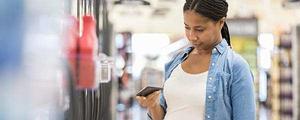Story Highlights
- A third of employed adults are concerned about workplace exposure
- Fear of COVID-19 at work is little different from last fall
- Concern remains higher among women, Democrats, front-line workers
WASHINGTON, D.C. -- As employers continue to wrestle with return-to-office policies, a third of workers still harbor moderate to significant concern about being exposed to the coronavirus at work.
The 33% of workers who are "very" or "moderately concerned" is a new low, but only slightly below the 36% found last November when COVID-19 infection rates were similar to today but death rates were much higher. Worker concern about on-the-job exposure was more prevalent in the first six months of the pandemic, in 2020, when about half were uneasy. At that time, 23% said they were "not concerned at all," but that has risen to a record-high 39% of workers in the latest poll; another 28% are "not too concerned."
The most recent data are from Gallup's quarterly COVID-19 tracking poll, conducted by web July 26 through Aug. 2, 2022, using the Gallup Panel. Over 3,600 adults were polled, including 1,274 employed full or part time by an employer.
Workers Foresee Fall Infection Spike, Concerned About Variants
The percentage of workers who are very or moderately concerned about being exposed to COVID-19 at work is similar to the percentage of workers who, in another question in the survey, say they are very or somewhat worried about getting the virus, generally (36%).
When asked about the outlook for COVID-19 infections this upcoming fall and winter, employed Americans' prediction is similar to that of the public at large: Two-thirds of workers say they expect infections to increase a great deal (26%) or a moderate amount (43%). Roughly a quarter think the infection rate will remain about the same, while only 6% think it will decrease to any extent.
The poll, which was conducted before booster shots designed to target the omicron-specific variants became available, finds that a slight majority of workers are very (18%) or moderately (36%) worried about new strains of COVID-19 spreading. Less than half are very (5%) or moderately (39%) confident that COVID-19 vaccines will protect people from newer variants of the virus.
Women, Democrats Most Nervous About Risk of Workplace Exposure
There is virtually no difference in concern about exposure to COVID-19 at work between younger and older employees, but working women continue to worry significantly more than working men -- 41% vs. 26%, respectively. This mirrors society-wide gender gaps in concern about the coronavirus seen throughout the pandemic.
Party affiliation is also a strong predictor of employee attitudes about the risk of exposure to COVID-19 at work. About half of Democratic workers (51%) are very or moderately worried, compared with half as many political independents (26%) and even fewer Republican workers (14%). These partisan differences have existed for most of the pandemic, and the gap remains as wide as ever.
Concern Varies by Industry or Job Type
Gallup asks workers to identify what industry they work in and classifies them as either white collar/office-based, blue collar, education or healthcare workers. Education workers are currently the most likely occupation type to express concern about exposure to the coronavirus at work: 53% are very or moderately concerned. They are followed by healthcare workers (42%) and then white-collar workers (33%), while blue-collar workers are the least concerned (24%).
Gallup's prior tracking found white- and blue-collar workers more similar in their concern about exposure at work than they are today. However, since last November, concern has declined among blue-collar workers while it has held steady among white-collar workers.
Education and healthcare workers have consistently been the most concerned; however, concern has fallen to 42% among healthcare workers since last fall while remaining above 50% among education workers.
Employees who work exclusively from home are, naturally, less likely than the average worker to be concerned about workplace exposure (24%). Hybrid workers -- those working partly on-site, partly at home -- are tied with those working minimally at home or entirely on-site in expressing higher concern, at 35%.
This pattern has been seen throughout the pandemic, except for the earliest months in the spring of 2020 when the three groups were equally concerned at a high level.
Bottom Line
U.S. workers' concern about being exposed to COVID-19 on the job is at a new low point, but still prevalent enough that it remains a potential hurdle in coaxing remote workers back to the office. While much of society seems to be getting back to pre-pandemic normal, employers will need to recognize that staying healthy remains a factor in some employees' workplace preferences.
Should coronavirus infection rates rise this fall as many workers anticipate, that could strengthen remote workers' resolve to stay put for the time being while potentially compelling some on-site workers to step away.
By virtue of their greater concern about exposure to COVID-19, the work choices of women, Democrats, education workers and healthcare workers could be most influenced by any worsening of the virus situation in the months ahead.
To stay up to date with the latest Gallup News insights and updates, follow us on Twitter.
Learn more about how the Gallup Panel works.




